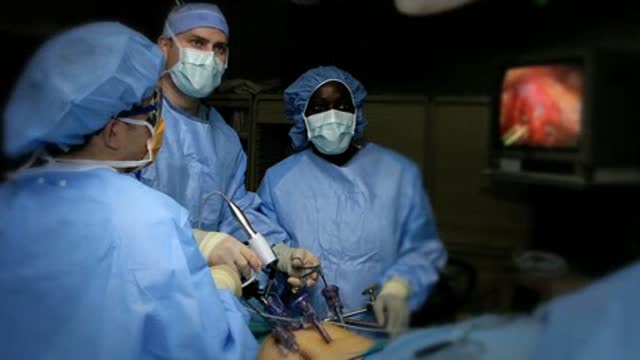Abandoning perineal radical prostatectomy a mistake, experts say
Reuters Health • The Doctor's Channel Daily Newscast
“Urologists may be abandoning an underused but cost-effective surgical approach that compares favorably with its successors,” conclude Dr. Jim C. Hu from Brigham and Women’s Hospital, Boston, and colleagues in a report in the January 2011 issue of The Journal of Urology, available online now.
While PRP was the predominant surgical approach for prostate cancer for many years, RRP and MIRP have largely replaced it.
Dr. Hu and colleagues set out to determine, in a contemporary cohort of Medicare beneficiaries, how often PRP is actually being used and how outcomes compare to the more modern procedures. Their analysis was based on a group of men diagnosed with prostate cancer between 2003 and 2005; 452 underwent PRP, while 6,899 had RRP and 1,938 had MIRP. All were followed through the end of 2007.
The investigators focused on postoperative 30-day and anastomotic stricture complications, incontinence and erectile dysfunction, and adjuvant therapy (hormonal therapy and/or radiotherapy).
During the study period, use of MIRP rose and use of RRP and PRP declined, as expected. PRP use decreased more than three-fold during the study period; in 2007, less than 2% of radical prostatectomies were done via a perineal approach, versus 6.5% in 2003, the investigators say.
After adjustment for propensity score, men who underwent PRP versus RRP had shorter hospital stays (a median of 2 days vs. 3 days, p < 0.001), received fewer blood transfusions (7.2% vs. 20.8%, p < 0.001), and needed less additional cancer therapy (4.9% vs. 6.9%; p = 0.020). There were no differences between PRP and RRP in 30-day complications, mortality, postoperative stricture, or erectile dysfunction or incontinence.
When comparing PRP and MIRP outcomes, PRP was associated with more blood transfusions (7.2% vs. 2.7%; p = 0.018), fewer miscellaneous medical complications (5.3% v. 10.0%; p = 0.045), and fewer erectile dysfunction procedures (1.4 vs. 2.3 per 100 person-years, p = .008). There were no differences between PRP and MIRP with regard to length of stay, overall 30-day complications, mortality, incontinence or additional cancer therapy.
During the first six months after surgery, mean and median expenditures were $1,500 lower for PRP than for the other two procedures (p < 0.001).
Dr. Hu and colleagues say, given increased attention to health care costs and comparative effectiveness research, their findings contribute to other studies showing that PRP is a “favorable and perhaps prematurely abandoned” older radical prostatectomy procedure.
They’re concerned that the decline in use of PRP “limits PRP training and exposure to this approach to the next generation of urologists.”
They also found in this contemporary cohort that men most likely to undergo MIRP, as opposed to PRP, came from wealthy cities, perhaps due to the successful marketing approach of robot-assisted MIRP.
The clinicians caution, however, that their study was restricted to Medicare beneficiaries older than 65 who resided in regions participating in the Surveillance, Epidemiology and End Results (SEER) Medicare registry; thus, the results may not be applicable to younger men or those treated outside SEER regions.
Reference:
Comparative Effectiveness of Perineal Versus Retropubic and Minimally Invasive Radical Prostatectomy
J Urol 2011;185:111-115.






